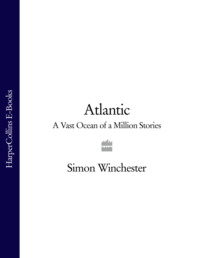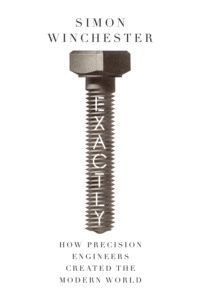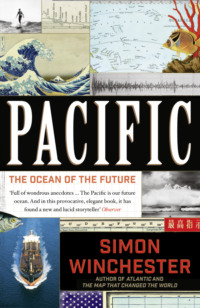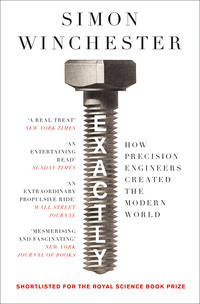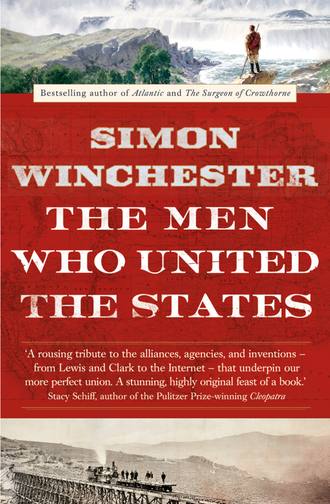
Полная версия
The Men Who United the States: The Amazing Stories of the Explorers, Inventors and Mavericks Who Made America
From the very visible nineteenth-century explorations of the Lewis and Clark expedition, by way of the geological surveying expeditions and the highway-building ventures and waterway excavations, to the less easily describable twenty-first-century mystery makings of the Internet communications backbone—there are fully two centuries of inventive zeal that have left as legacy a nation now as comprehensively interconnected and as practically unified as it is possible to imagine.

But how best to organize the wealth of work that has brought about this unity? The sheer complications of it all—the overlappings of the work of road builders and survey makers, of the pioneers of flight and the makers of radio, of the work of those who dug canals and those who excavated the tunnels for the railroad lines—made it well-nigh impossible to narrate the story in purely chronological terms. By the same token, to list the characters who were involved in the forging of the union would lend the account the feel of a catalog or an encyclopedia. A device was needed, it seemed to me, that would link the achievements thematically and give the story some greater degree of structure and logic.
An idea came to me one morning when I was writing a letter to a friend in China.
Beginning in the mid-1970s, I had lived for many years on the far side of the world and had spent much time tramping the territories between Vladivostok and Vietnam, between Manchuria and Malaysia, and between Kashmir and the Khyber Pass. All the countries of Asia—as well as the ancient civilizations of the Mediterranean—had held for centuries a philosophical view that everything and everyone can be reduced to the barest essentials, the five so-called classical elements. While the ancient Greeks revered just four elements, most other civilizations, from India eastward, nominated five.
The various eastern countries in their histories have made subtle variations in just what these five elements are, but those most commonly selected are wood, earth, water, fire, and metal. While I was writing the letter to my friend in Shanghai that day and explaining the idea behind the book, it suddenly seemed to me that the five elements could be a logical way of placing into context the basic themes behind the making and joining together of the United States.
The earliest explorers of the country, for example—Lewis and Clark and all the others in the years immediately following—were confronted by endless stands of ancient forest. Despite the myths, these forests were seldom as impenetrable as those in Russia or the tropics: Native Americans regularly set fires to manage and to thin them, to create pasture and to make usable landscape. But they were woods nonetheless, and they were vast and ancient.
The early explorers paddled through them and up and along the various rivers of their expeditions in wooden boats. In winter and at night, they kept themselves warm by building fires of oak and ash wood. They framed their earliest houses of timbers of cedar and pine.
Wood, in other words, could be claimed as an abiding elemental theme of their voyage of discovery, and it would go on to be a dominant feature of every subsequent early voyage across the country. Wood, then, could provide an overarching theme for a chapter that considered these first explorers and settlers, an emblem of the frontier in the forested wilderness that was the American continent.
Once the basic geography of this continent had been established, there came the equally vital task of learning what riches might lie beneath the woodlands and the carpets of vegetation. Geologists—men who were quite unschooled at first but highly sophisticated in later years—began to probe for the mineral riches and determine the agricultural worth of the land, the value and potential of the earth. The vision of mineral treasures lying locked within those millions of acres, or the possibilities of fertile farmland for crops or livestock, and of livelihoods to be made from raising them, would in due course lure out the settlers and prompt their treks westward into a country that was now established to be blessed with the promise. The earth and its riches, in short, would offer a second theme well worthy of exploring.
And the remaining three elements—water, fire, and metal—prove equally suited to this broader organizing principle.
Water, for instance. There is no gainsaying the use of the country’s rivers and streams as early highways and the later employment of these waterways for trade, for the making of power, for the creation of frontiers. Then, if the waterways were not wide enough or deep enough or straight enough, there came the making of artificial rivers—the canals—which might ease the passage of people and goods across mountain chains. For scores of decades, right through to today, there are stories to tell of figures who were prominent in such unifying endeavors, which could all be linked by the essential element of water.
After or overlapping with these stories, there came the invention of the engines and the concept of employing these engines as agents of motive power. The common physical feature of all such early engines was the employment of heat; whether they were powered by steam, gasoline, or aviation fuel, these engines would eventually allow the country to be journeyed across swiftly, expeditiously, and easily. The nation could now be intimately linked along roadways and highways traveled by a variety of contraptions, all powered by fire.
Finally: metal. The copper cable of the telegraph, the steel wire of the telephone, the iron mast of radio and television, the subterranean and aerial titanium and cadmium and platinum mysteries of the Internet—the elemental common denominators of the transmission of information might be varied indeed, but in the terms of the ancients, metal was the common factor. Metal was key.
Armed with this basic notion, I set off for several months of exploration. Like a mantra, the words wood, earth, water, fire, and metal became a phrase, repeated over and again, that lay always in the back of my mind as I traveled back and forth between the coasts and crossed the prairies and the mountain ranges of the United States.
I equipped myself for the journey with tent and compass and sleeping bag, as well as numberless maps, books of history, and novels by the classic writers of the American experience: Willa Cather, Wallace Stegner, John Williams, Theodore Dreiser, Sinclair Lewis, Sherwood Anderson. And as vade mecum, I also managed to collect all fifty volumes of the American Guide Series—the famous WPA Guides, still among the most thoughtfully composed and intelligently edited books about the individual states.
The books date back to the late 1930s and were each assembled, as part of President Roosevelt’s New Deal, in a federal government effort—the Federal Writers’ Project—to give work to unemployed authors, journalists, and photographers. Though as sources of precise travelers’ information, they are long past their sell-by date, their essays still have a sustaining importance, and they offer wise counsel and a grand perspective for anyone wishing to venture into the great American hinterland.
The WPA guides—government-made books, it has to be remembered—offer a reminder of a highly divisive argument about the making of America: the role of government in the creation and sustenance of human society.
That is not to say that in these pages I wish to offer an uncritical apologia for the concept of big government. Far from it. There are all too many examples of unforgivable excesses. The savage and divisive melancholy of the Trail of Tears was, after all, a consequence of overzealous government behavior toward America’s own native peoples, with results that ran entirely counter to the principal thesis of this book. The amassment of vast armories of atomic weapons, the involvement of the United States in scores of cruel and unnecessary foreign wars, the lunacies of Prohibition, of the Tuskegee experiment, of the infamous MK Ultra program, and of the fully legislated and half-century-long antipathy to Chinese immigration—all of these and more were the acts of a government that had simply become on occasion too big for its boots.
Yet there was much good done, too, and not a little of it was and still remains on display in the telling of this story. Without an engaged and functioning federal government, the development of these various strands of the country’s connective tissue would probably have been either delayed or never achieved at all. That is why my reading of the WPA Guides provided me with a symbolic madeleine, a means of remembering a single sobering fact: while today’s political hostility to big government is an understandable reality of contemporary life, the historic role of big government in the creation of the American nation is a reality, too, one that might as well be acknowledged and celebrated for its value and great worth.
The first two volumes of the series that I decided to use were published in 1940 and 1941, respectively: the first was devoted to Ohio; the other, to Missouri. I took them along because I had decided to travel first to a pair of places that seemed to me to have played crucial roles in the making of a united America.
Each town stands on the right bank of a great American river, and in each case the river gave its name to the state in which the town is situated. The first town was East Liverpool, which is both in Ohio and on the Ohio; the second was Saint Charles, which likewise is both in Missouri and on the Missouri. Neither place is especially well known, whatever its chamber of commerce might say. The importance of each has faded over the centuries. Neither seems to me lovely enough to attract many visitors.
But each town was once most important to the man who originated the idea of creating a properly United States of America, a Founding Father who would go on to be the country’s third president, Thomas Jefferson. And each town now has a fine-looking memorial—in one case a plaque, in the other an obelisk—to the events that occurred there and helped make each community briefly famous.
Both memorials are now surrounded—and in the case of one of them, half hidden—by trees. A reminder, if any were needed, that at the time Thomas Jefferson gave these places their brief significance in making the physics of the union, America was a land swathed by long reaches of barely penetrable forest, most of its mysteries still half hidden by wood.
I never before knew the full value of trees. My house is entirely embossomed in high plane-trees, with good grass below; and under them I breakfast, dine, write, read, and receive my company. What would I not give that the trees planted nearest round the house at Monticello were full grown.
—THOMAS JEFFERSON, LETTER TO MARTHA RANDOLPH, 1793
… I was not prepared to see the pine timber so valuable and heavy as it is above and about here. The trees are of large growth, straight and smooth … With the exception of swamps, which are few and far between, the timber land has all the beauty of a sylvan grove. The entire absence of underbrush and decayed logs lends ornament and attraction to the woods. They are more like the groves around a mansion in their neat and cheerful appearance; and awaken reflection on the Muses and the dialogues of philosophers rather than apprehension of wild beasts and serpents.
—CHRISTOPHER COLUMBUS ANDREWS, Minnesota and Dacotah, 1856
A VIEW ACROSS THE RIDGE
Thomas Jefferson was a man with a lifelong fascination with trees. He thought of them as his favorite kind of plants, wrote of them as his pets, and went to much effort and expense to place those he liked best around the great west lawn of Monticello, the house he made for himself in the foothills of the mountains of Albemarle County, Virginia.
He was an extravagant man, given to extravagant visions—which Monticello’s present-day garden conservators have done much to reproduce. So just as he wished when he first bought Monticello in 1768, there are today long allées of willows, great terraces of magnolias, and stands of sugar maples. There are linden trees, mulberries, and honey locusts; there are oaks and pines and pecans, catalpas and gingkoes and chestnuts, sycamores, walnuts, slippery elm, and Osage orange and border plantings of persimmons, black gums, and fruit-bearing peach trees.
Monticello’s fortunes have fluctuated dramatically over the years—not least because the third president’s excesses left the estate hopelessly mired in his legacy of debt. For many decades the house itself was a magnificent ruin, the estate gardens were left to run wild, and the surrounding forests were choked with underbrush. Some of the greater trees survived the rigors of time and neglect, however, and in recent years it became something of a sport to try to say with certainty which of these gnarled monsters Jefferson himself might have planted. It somehow made the country’s best-beloved Founding Father ever more human to imagine him out in the garden on a summer’s evening, digging the saplings deep into the hilltop’s rich loamy soil, to think of him spreading mulch above their roots and then leaving the shoots to the soothing balms of warm Virginia rains.
An X-ray device invented by a Dutch arborist was recently brought in to work out the age of the nobler-looking trees, and there was much exultation on the mountain when four of them could be proved to be at least two hundred years old—and thus quite old enough to have been planted by Jefferson. But irony has no respect for antiquity: no sooner had these trees been identified as most probably the work of the man himself—or the small army of slaves he had working on his estate—than all four of them keeled over and died.
Two of them were massive but fragile tulip poplars, one of which was fully ten yards around at its base and had begun to pose a dire threat to the building beside it. The others were a larch and a copper beech, immense shade trees under which the aging Jefferson was said to have whiled away many of the afternoons of his latter days. To most there was a gentle poignancy in their passing, because it severed one certain and romantic connection with the man who, above all others, still stands today as the architect of most of the central ideas behind the making of the United States.
But one other connection, a small and little-noticed arboreal conceit at Monticello, also links the man and his vision—and quite literally his vision—with those who visit today. It is a small and cleverly created spy hole in the woods that surround Monticello, and it affords visitors a subtle view of their surroundings that in its own way is every bit as inspirational as that which Jefferson, in laying out the plans for his estate, had once designed for himself.
Monticello faces almost exactly to the west. Were it not for one low hillock in between, Jefferson would have been able to contemplate an uninterrupted panorama clear across to the Blue Ridge Mountains, thirty miles away. The 1,200-foot Montalto—on top of which he once planned to build an observation tower but never did—does slice off some of the ridge’s more southerly aspect. But only a little. Otherwise the view was unobstructed. The trees Jefferson planted around his lawns had not in his lifetime grown tall enough to be much of a barrier, so that toward the end of his life he could sit on his porch and watch the sunset over the distant folds of hills, with only Montalto slightly in the way.
Today, however, this is no longer true. The trees have grown high, and someone sitting where the president liked to take his evening ease could no longer see in the summer his blue remembered hills. Instead he would be confronted by a mighty wall of green—or in October, when the trees take on their autumn colors, a tableau of brilliant yellows and reds and oranges. The view might well be chromatically beautiful, but because of the sheer number of fully mature trees that have sprung up today, it is not at all what Thomas Jefferson saw.
Those who run Monticello today have long sought to re-create the estate just as it was in the fifty-eight years it was his home, views and all. To help achieve this, they have cut a spy hole in the trees. By judiciously pruning and carefully planning, the foresters have cut in the faraway wall of oaks and hemlocks and white pines what looks like a tiny eye-shaped rent—though up close it is a hole probably measuring a good twenty feet by ten, at least. By careful cutting back and shaping, they have managed to keep it clear year after year—with the result that it is quite possible to squint through it and see, or at least to glimpse briefly, a fraction of what Jefferson saw.
Because Jefferson was most especially proud of having created the University of Virginia, the tree cutters and spy-hole makers have managed to frame its great rotunda, which Jefferson did not live to see finished, in the dead center of the view. Behind, though, are the soft, wood-smothered hills, with the sinuous curves of the Skyline Drive and the Blue Ridge Parkway marking their summit lines. These are hills with a special significance in American history and in the story of the eventual unification of the country. For in Jefferson’s time these hills toward which he gazed marked the outer limits, the western edge, the border of the pale of properly settled America. They were a line of hills which Jefferson never managed to cross but which intrigued him, pulled at him, and nagged at him all his life.
DRAWING A LINE IN THE SAND
There are a great many aspects of Jefferson’s character that led him to play so crucial a part in the physical creation of the eventual transcontinental republic. It is a commonplace to repeat that he was a man of contradictions. He was a scientist, first and foremost, as well as a learned aesthete and a slave-owning aristocrat with apparently profound feelings for the furtherance of human decency, kindness, and civilization. At thirty-two years old, he was described by the überbiographer James Parton as “a gentleman … who could calculate an eclipse, survey an estate, tie an artery, plan an edifice, try a cause, break a horse, dance a minuet and play the violin.”
There was something else though. Thomas Jefferson may well have been a sophisticated foreign traveler—he had been minister to France, after all, and later for four years was the US secretary of state—but his travels within the republic were limited indeed. And yet for most of his life, he was quite enthralled by the concept of the American West. He suffered from a bewildering, almost uncanny, and romantic fascination with the continental Occident. He was obsessively interested in particular in just how its immense and generally unknown acreage could and should eventually be apportioned among his country’s fast-growing citizenry.
To know its geography was a first imperative. As far back as 1783, while he was a Virginia member of the Continental Congress, he had formally suggested the mounting of a private expedition to the Pacific. “I have always had,” he declared, “a peculiar confidence in men from the western side of the mountains.”
But Jefferson did not mean by this the grand crystal crags of the Rockies or the Sierra Nevada (of which he, in common with most, knew precious little). Rather he meant the relatively modest ripples of the Appalachians, of which the Blue Ridge hills that he could see from Monticello were the easternmost. For these endless ridges of Devonian rock that rose out of the coastal plains from South Carolina up to New York essentially marked the edge of the United States proper, in Jefferson’s time. Beyond them, America was barely known.
Five million people (a fifth of them black, mostly enslaved) lived within fifty miles of the Atlantic Ocean, hemmed in by these confusing swaths of mountains. Only four dirt roads pierced the passes between the hundreds of miles of ranges. Poor weather, frequent rockfalls and mudslides, or else the occasional understandable hostility of the Creek, the Iroquois, or the Cherokee who once owned these lands (to the extent the ownership of land was a concept recognized by indigenous Americans) increased the difficulty for settlers wishing to travel across the hills, between South Carolina and Kentucky, say, or from Tennessee to Pennsylvania. As late as the middle of the nineteenth century, it could still take nine days of fitful journeying by railroad, canal, riverboat, and stage line to get from New York across to Pittsburgh, because these Appalachian ranges were so ruggedly impenetrable. In Jefferson’s time, travel across them was for the fainthearted all but impossible.
Those scattered few who then lived permanently beyond this cordillera, those whose homes were south of the Great Lakes and down in the Ohio Valley, turned out to be so decisively cut off from the American mainstream that there was serious talk of secession, though in the end it came to little more than campfire grumblings. Meanwhile those who lived farther out still, in the wilds beyond the Ohio River and in the American-possessed (but hitherto Indian-reserved) lands that were then designated as the Northwest Territories, were as scarce as they were brave. They may have enjoyed Jefferson’s “peculiar confidence,” but they were initially outnumbered ten to one by Native Americans; they had extremely limited opportunity for work, mainly in the fur trade; they were protected, but only somewhat, by outpost contingents of American soldiers; and they lived under a scrappily benign version of martial law. It was only when their numbers reached five thousand—in 1798, two years before Jefferson became president—that they were given a representative government with a proper little parliament sited in the first instance in Marietta, the tiny town that was their territorial capital.
It was these doughty western settlers who were to become, however, the eventual first beneficiaries of one of the greatest and most revolutionary ideas put forward by Jefferson, as the territory in which they eked out their rugged existences became its initial testing ground. Jefferson’s great notion was that Americans could and should have the right to do something that was hitherto quite unimaginable to the Indian tribes: they should be able to own the land of which their territory was made.
Land ownership was an unfamiliar and almost alien concept. Bands of the Iroquois, the Creek, the Shawnee, the Delaware, the Miami, and their native kin had certainly passed through these lands for hundreds of years, had hunted it, settled it, raised families on it. But they had never imagined it as something that could be possessed. It was much the same for the early white settlers: they may not have had the same nomadic urges as the Shawnee and the Iroquois, but land ownership was conceptually well beyond their ken also. It might have seemed possible and reasonable for a settler to own a canoe or a cow or a cottage—or back in those unenlightened times in the Americas, even a slave. But land, an immovable part of the eternal fabric of our celestial body—that seemed somehow to be an entity beyond ownership, the possession of it lying perhaps within the divine prerogatives of kings but certainly not ever in the name of ordinary citizens.
Thomas Jefferson thought quite otherwise. He had developed this thinking long before completing his work on the Declaration of Independence. It is spelled out in a sulfurous pamphlet, published in 1774, in which he denounced King George III’s plan that American colonists on the far side of the Appalachians should live in a feudal arrangement, with the king owning the land and his tenants obliged to pay their feu to his court.
The thirty-one-year-old Jefferson denounced this as a barbarism. It was a formula for studied inequity, based on a fiction of kingly and ecclesiastical privilege that had been developed in Britain a thousand years before by the Norman conquerors and believed by many in the homeland ever since. Jefferson declared that such a concept—that only kings, churches, and the aristocratic mighty could own land—would not be allowed to infect the vast tracts of real estate that he suspected lay on the far side of his new country’s mountain ranges. All men should have, in his opinion, the right to own land there as they see fit—to buy, sell, or borrow against its value and to hand it down over the generations. And to pay taxes on it, moreover, from which good governance might be purchased and paid for.



